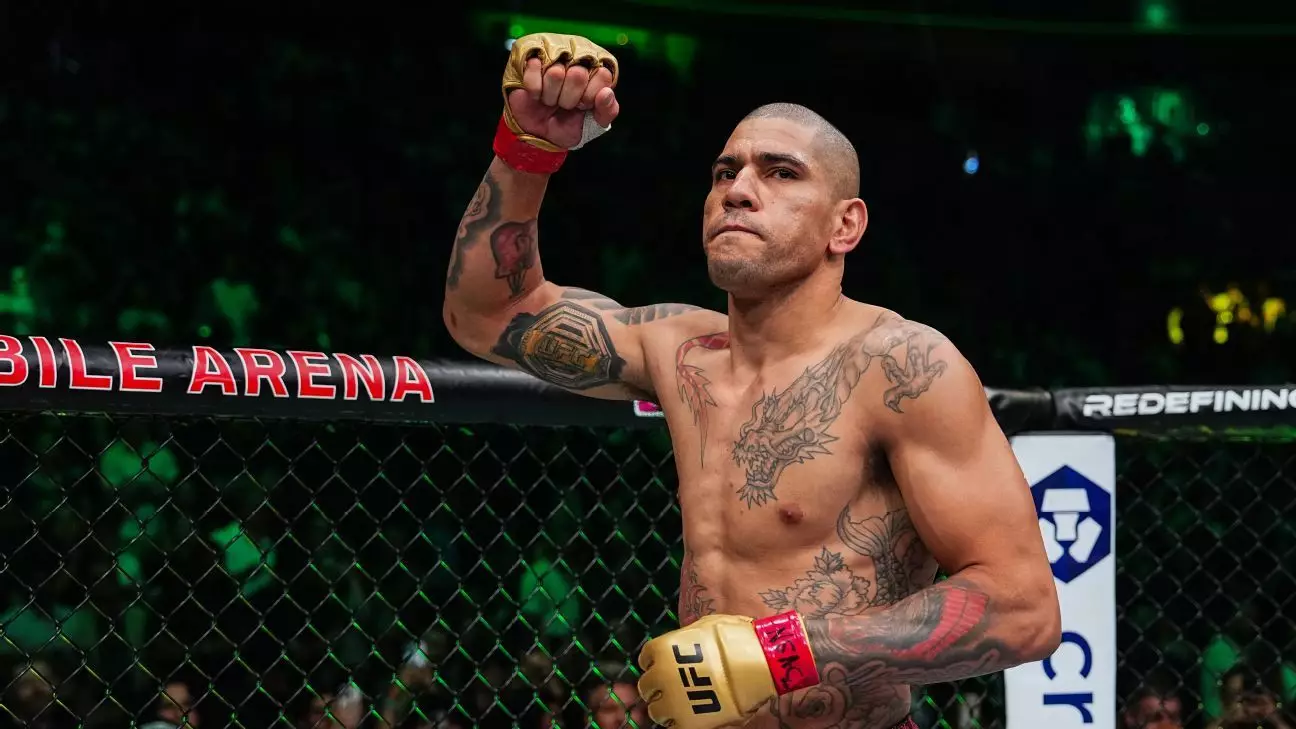In the high-octane world of mixed martial arts, champions often rise and fall with the tides of competition. Yet, few have made waves quite like Alex Pereira, who prepares to defend his light heavyweight title against Khalil Rountree at UFC 307 on October 5th. What makes this title fight particularly remarkable is not just its timing but Pereira’s relentless spirit, as this will be his third championship bout in just six months, earning him the recognition as the most active champion in UFC history at the age of 37.
Pereira’s ascent through the ranks has been both thrilling and tumultuous. After an injury-plagued 2023 that saw him grappling with a knee problem, many would have understandably stepped back to allow their bodies to heal. However, “Poatan” has displayed a refreshing hunger to compete, stating, “I want to fight all the time.” The unforeseen challenges he faced only fuel his desire for glory. The narrative around Pereira reflects a champion who operates beyond mere physical capabilities, tapping into psychological resilience.
In a candid revelation to ESPN, Pereira shared insights into the knee injury that haunted his training camp for his bout against former champion Jan Blachowicz in July 2023. He described how he had to stop training due to the severity of the injury, recounting moments where the dislocation of his knee could have led to a drastic halt in his career. Pereira opted to push through instead, resulting in a split-decision victory that, while celebrated, raised eyebrows regarding the limitations of his performance.
Fighting through injuries presents a dual narrative: on one hand, it showcases perseverance; on the other, it raises questions about the potential long-term consequences of such physical tolls. Pereira’s decision to take on challenges with an injured knee paid off when offered a chance for the vacant light heavyweight title against Jiri Prochazka in November. Pereira, displaying an almost defiant spirit, transcended expectations by scoring a knockout victory, ultimately marking him as the quickest two-division champion in UFC history.
Yet, it is crucial to consider the psychological aspects that accompany such physical feats. Pereira remarked on the unsettling nature of his championship performance, indicating that the celebratory front roll post-knockout was more a manifestation of fear than jubilation. It exemplifies the mental strains that go hand in hand with high-profile fights, evoking a sense of vulnerability beneath the façade of strength.
After undergoing essential knee surgery in December, Pereira returned to the Octagon at UFC 300 in April, achieving a first-round knockout against Jamahal Hill. However, with the intensity of his schedule, the fundamental question arises: how sustainable is this relentless pace? Pereira’s willingness to headline UFC 303 against Prochazka on short notice underscores his commitment, but also sheds light on a potential lack of time for recovery and strategy.
The implications of fighting through injuries and maintaining a robust schedule can trigger concerns for athletes at any level. Pereira recently indicated plans for future fights, including potential matches with Dricus Du Plessis for the middleweight title or even a move to heavyweight. Such ambitions are ambitious but present additional risks when prioritizing activity over recovery.
As Pereira gears up for an encounter with Rountree, his narrative serves as both an inspiration and a cautionary tale. With three title defenses packed into a mere 176 days, we await either a further cementing of his legacy or a potential recalibration of his competitive approach. While his electrifying fighting style keeps fans yearning for more, the complexities beneath the surface remain key to understanding the journey of a champion. In the world of high-stakes combat sports, where the fine line between triumph and fatigue is razor-thin, the evolution of Alex Pereira will provide valuable lessons not just for athletes but for anyone pursuing excellence at the cost of their own limits.


Leave a Reply